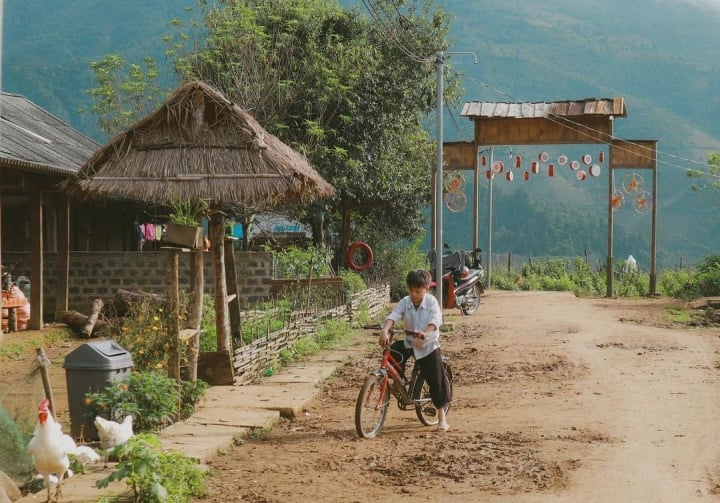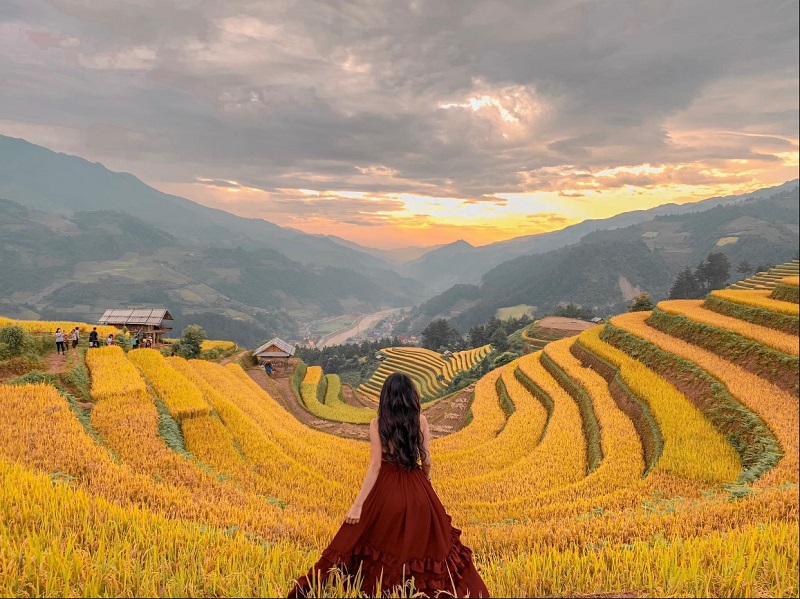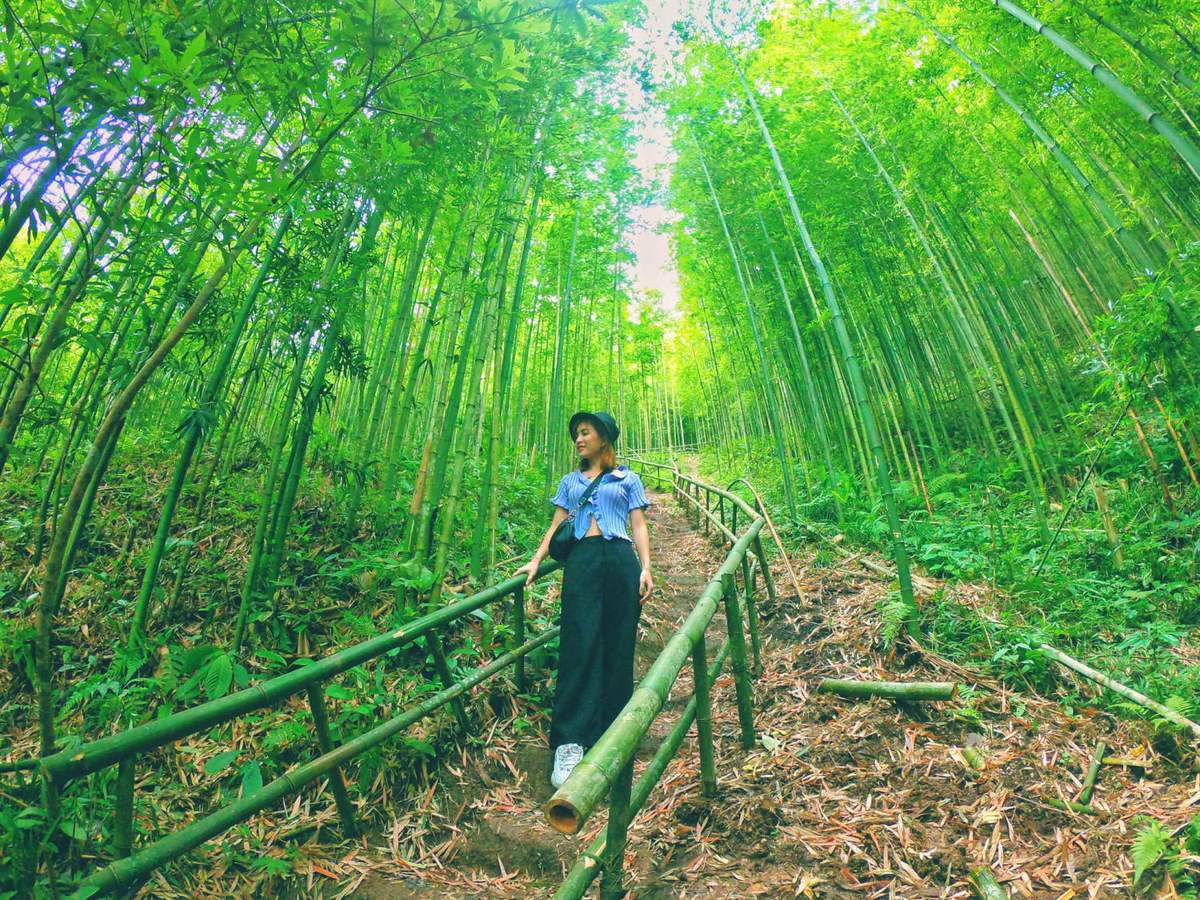
The rice terraces of La Pán Tẩn are a sight to behold, with golden rice fields stretching as far as the eye can see. The air is filled with the fragrant scent of newly ripened rice, and during harvest season, one can witness the local Hmong ethnic minority hard at work, gathering the ripe rice.

La Pán Tẩn is a vibrant and captivating place, especially during this season. The Khau Phạ Pass, a 30-kilometer-long pass located at an altitude of 1,200 meters, serves as a boundary between Văn Chấn and Mù Cang Chải districts. It is renowned for its treacherous hairpin bends and sheer cliffs.

The most impressive aspect of conquering the Khau Phạ Pass is immersing yourself in the majestic natural scenery. Travelers can admire the mountain ranges, resembling curved horns piercing through the white clouds, the winding pass through primordial forests, and the rice terraces of the Hmong and Thai ethnic groups, glowing golden in the autumn sun.

The peak of Khau Phạ Pass is also an excellent spot for paragliding. From above, one can appreciate the vastness of the landscape, taking in the pass and the mountains, feeling the change in altitude, and marveling at the fairy-tale-like beauty of the region.
Cu Vai Village: Cu Vai Village is nestled on a distant mountain peak, often shrouded in mist. In the Thai language, Cu Vai means a cloud hanging in the sky.

At Cu Vai, visitors can feast their eyes on the endless green mountains on all sides, with fluffy white clouds floating by, giving the impression that one could reach out and touch the sky.

In addition to the breathtaking scenery, visitors can also learn about the local way of life. Cu Vai Village is home to a small number of households, with 80% belonging to the Hmong ethnic minority. The locals lead a life closely connected to nature, and due to limited visitors, the area retains its pristine beauty and cultural authenticity.

Walking through the small village paths, one is likely to encounter playful local children with radiant smiles and innocent, friendly eyes, even towards strangers.
Móng Ngựa Hill: Móng Ngựa Hill, located in Sáng Nhù, is over 2 kilometers from the town of Mù Cang Chải. The name Móng Ngựa, which translates to “horse hoof,” originates from the deep curves and terraced fields that resemble a horse’s hoof when viewed from above.

The journey to Móng Ngựa Hill involves traversing steep and treacherous paths, but the reward is a surreal landscape that feels otherworldly. From a high vantage point, one can admire the vast expanse of golden rice fields stretching into the distance, a truly awe-inspiring sight. Sunset is the most magical time on Móng Ngựa Hill, offering the perfect opportunity to capture stunning photographs.
Nả Háng Tủa Bamboo Forest: The 60-year-old bamboo forest is located 20 kilometers from the center of Mù Cang Chải. This ancient bamboo forest, covering an area of over 1 hectare, has been recognized by CN Traveler (Conde Nast Traveler) as one of the TOP 20 most colorful destinations in the world.

This newly discovered destination has become a favorite among visitors. The forest resembles a scene from a martial arts film, with countless tall and straight bamboo trees creating a mesmerizing landscape.



































